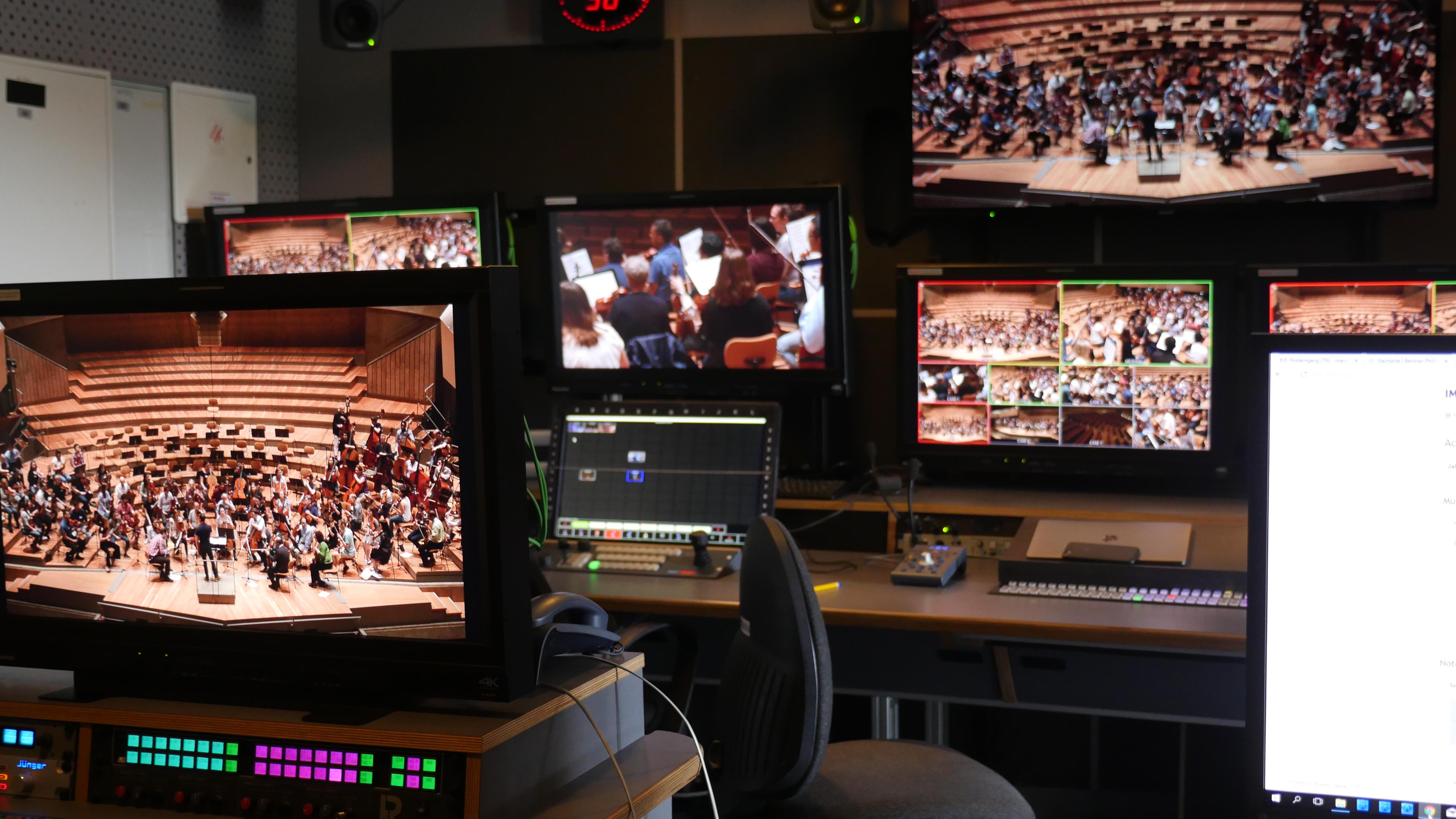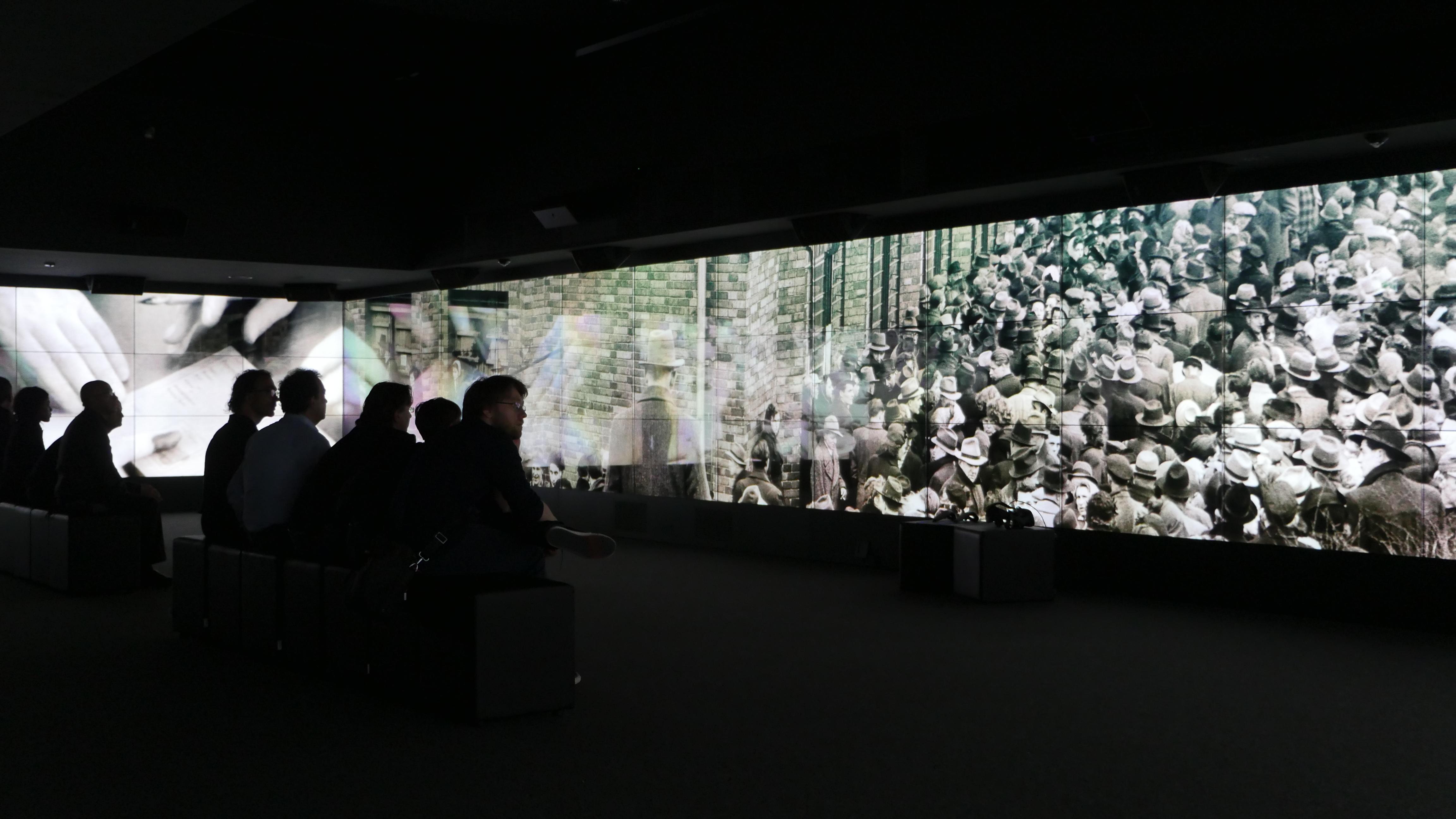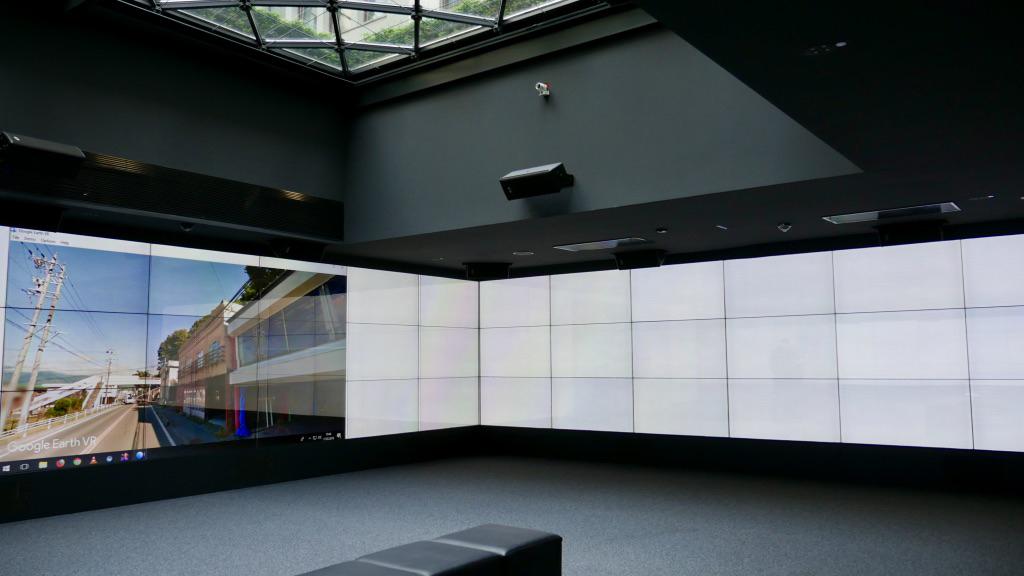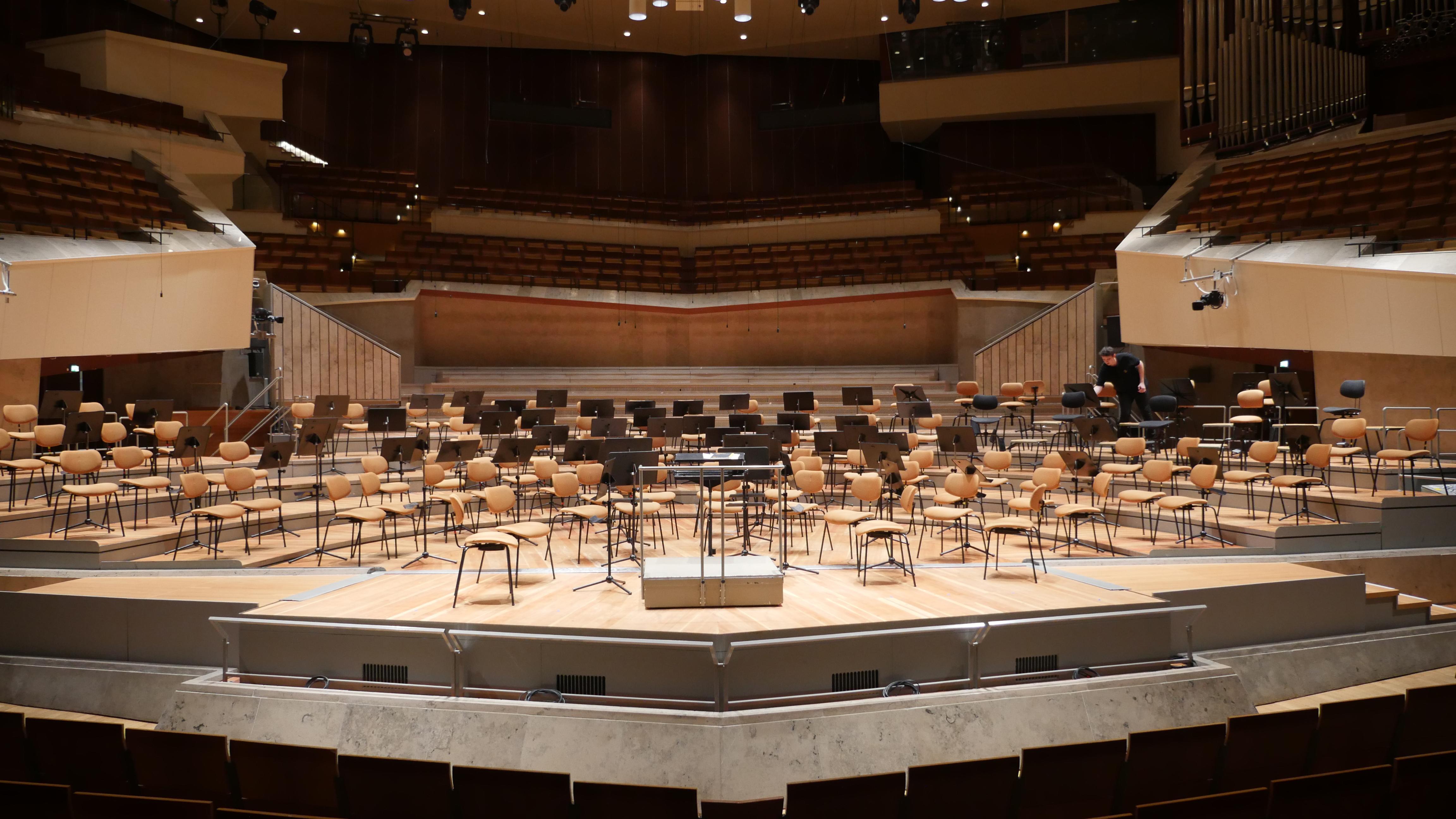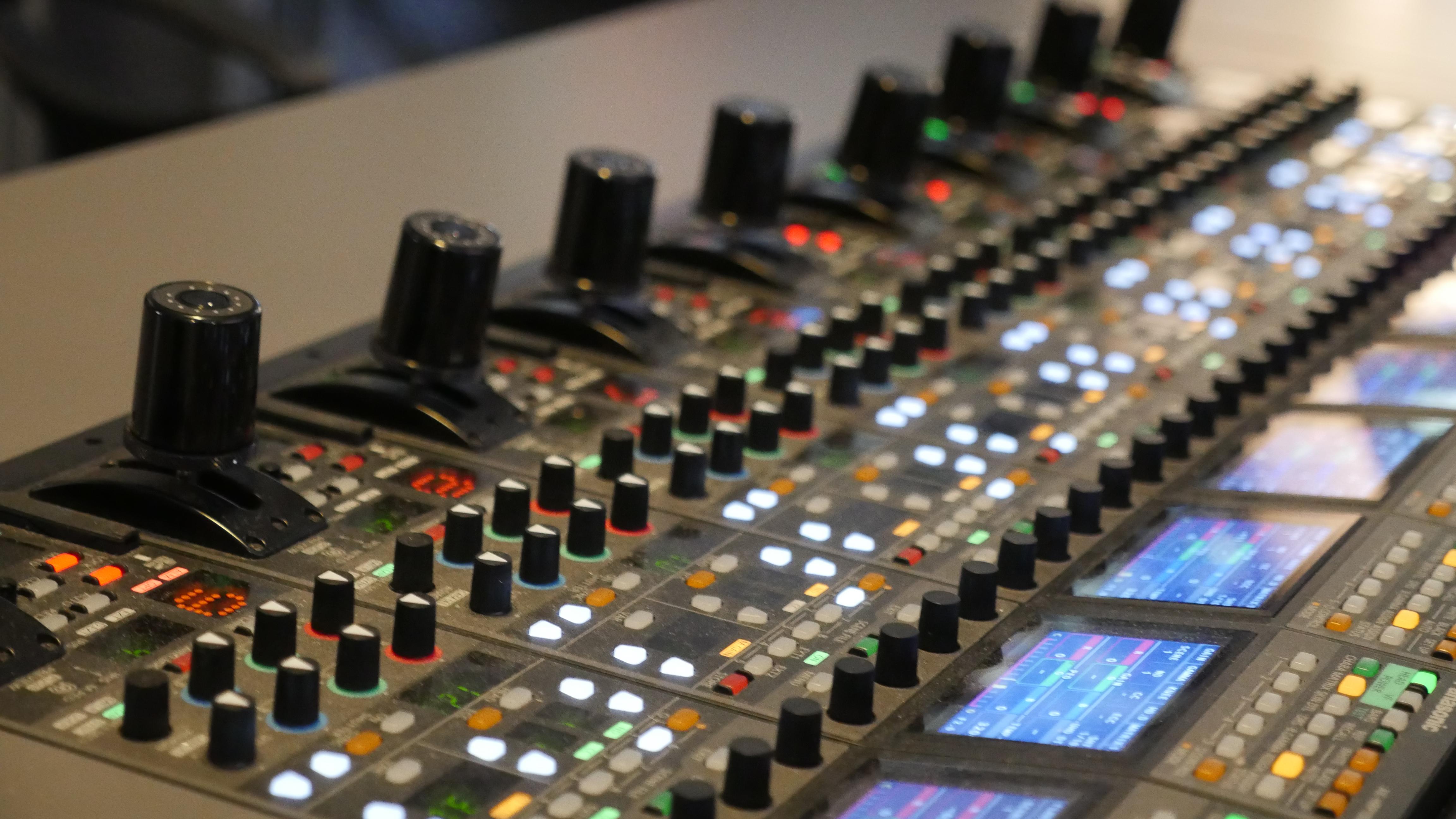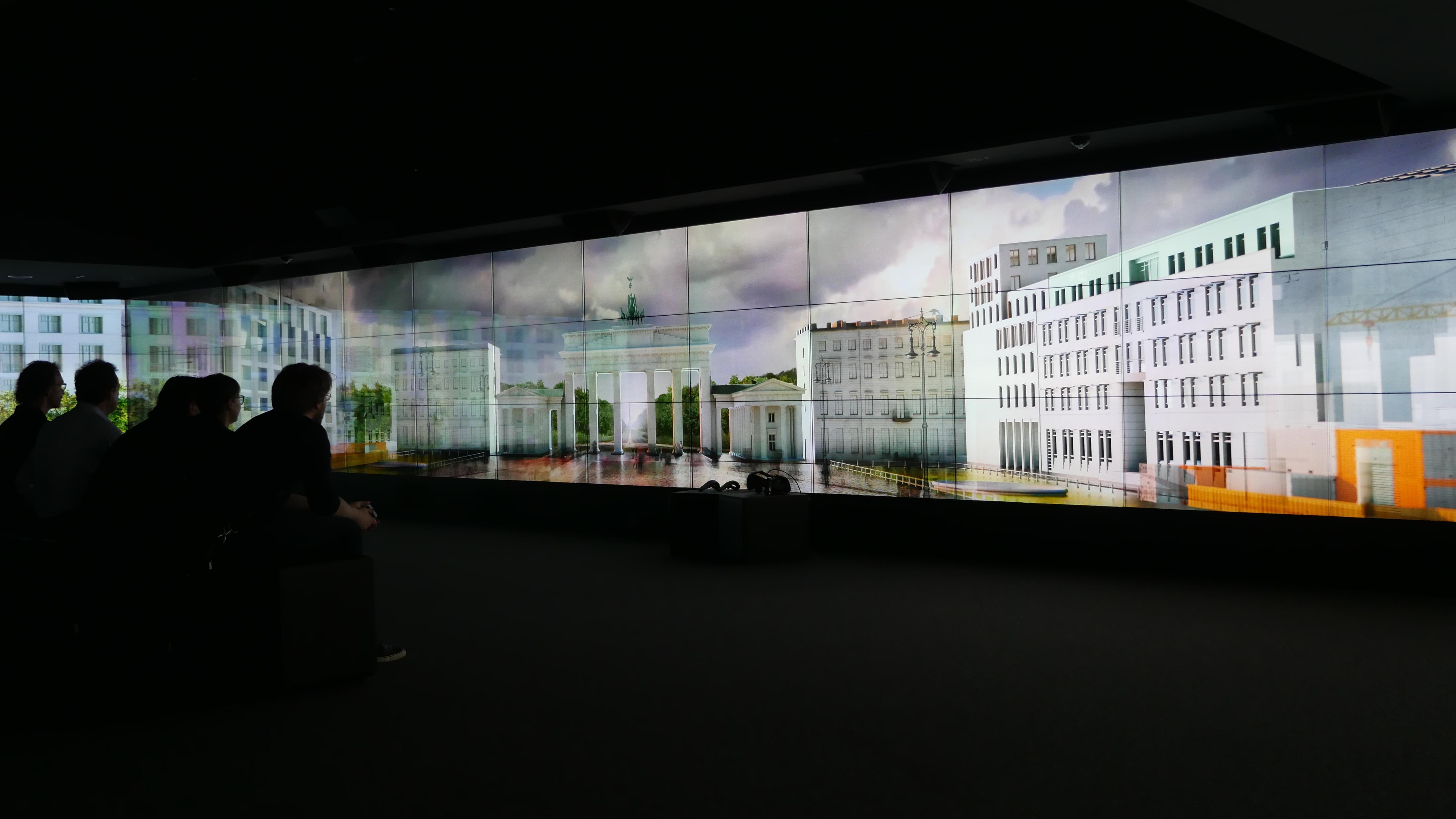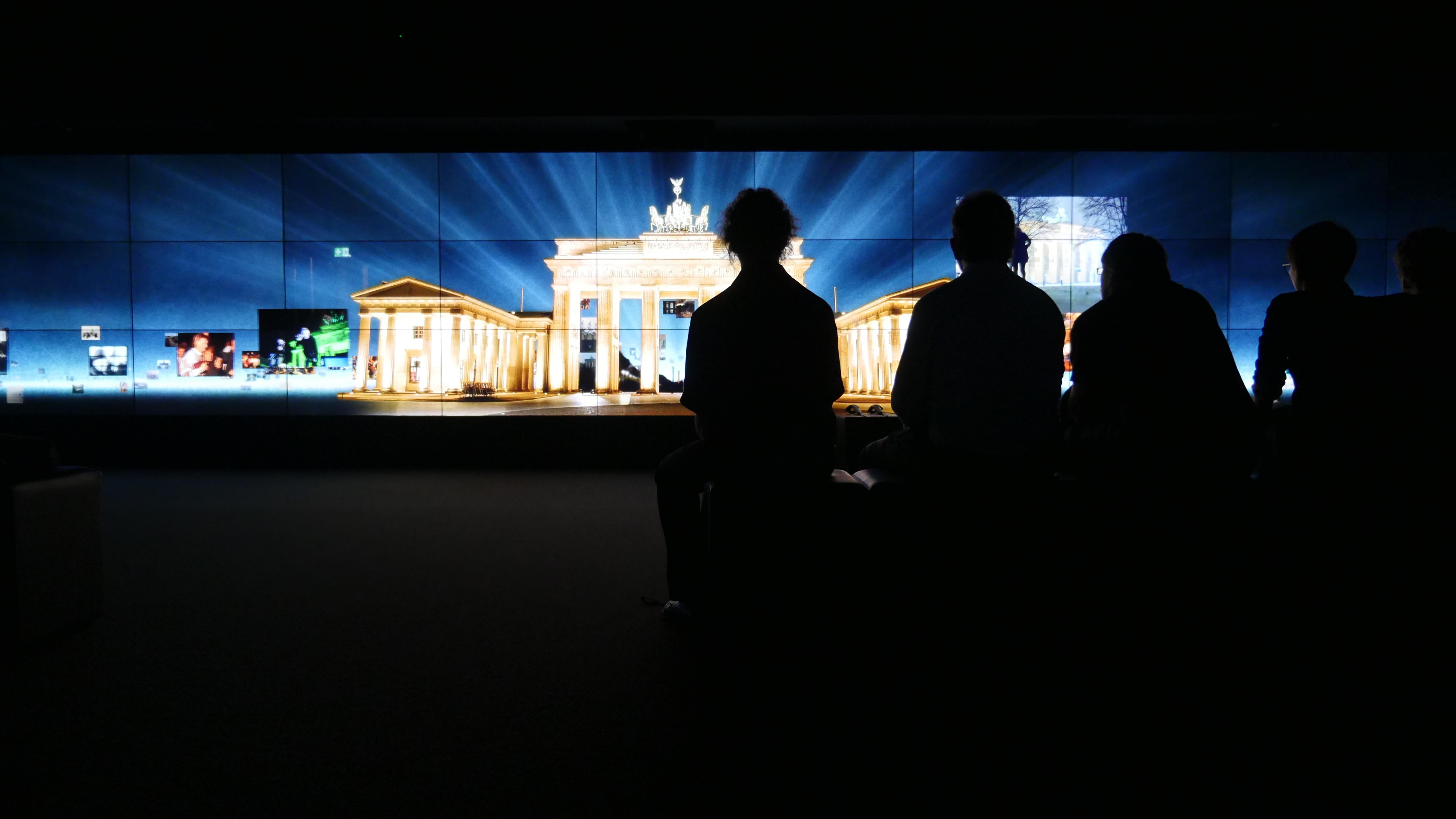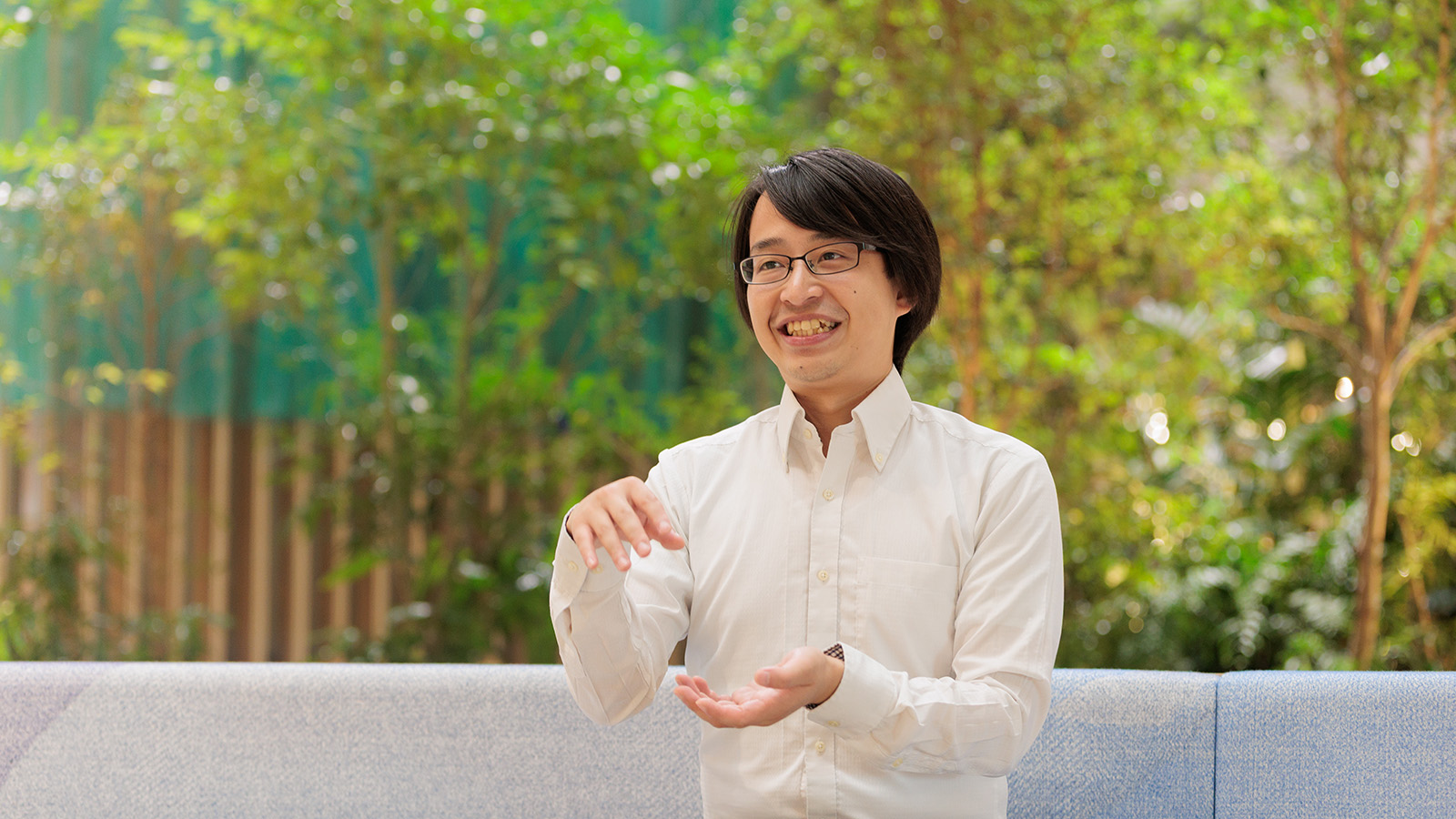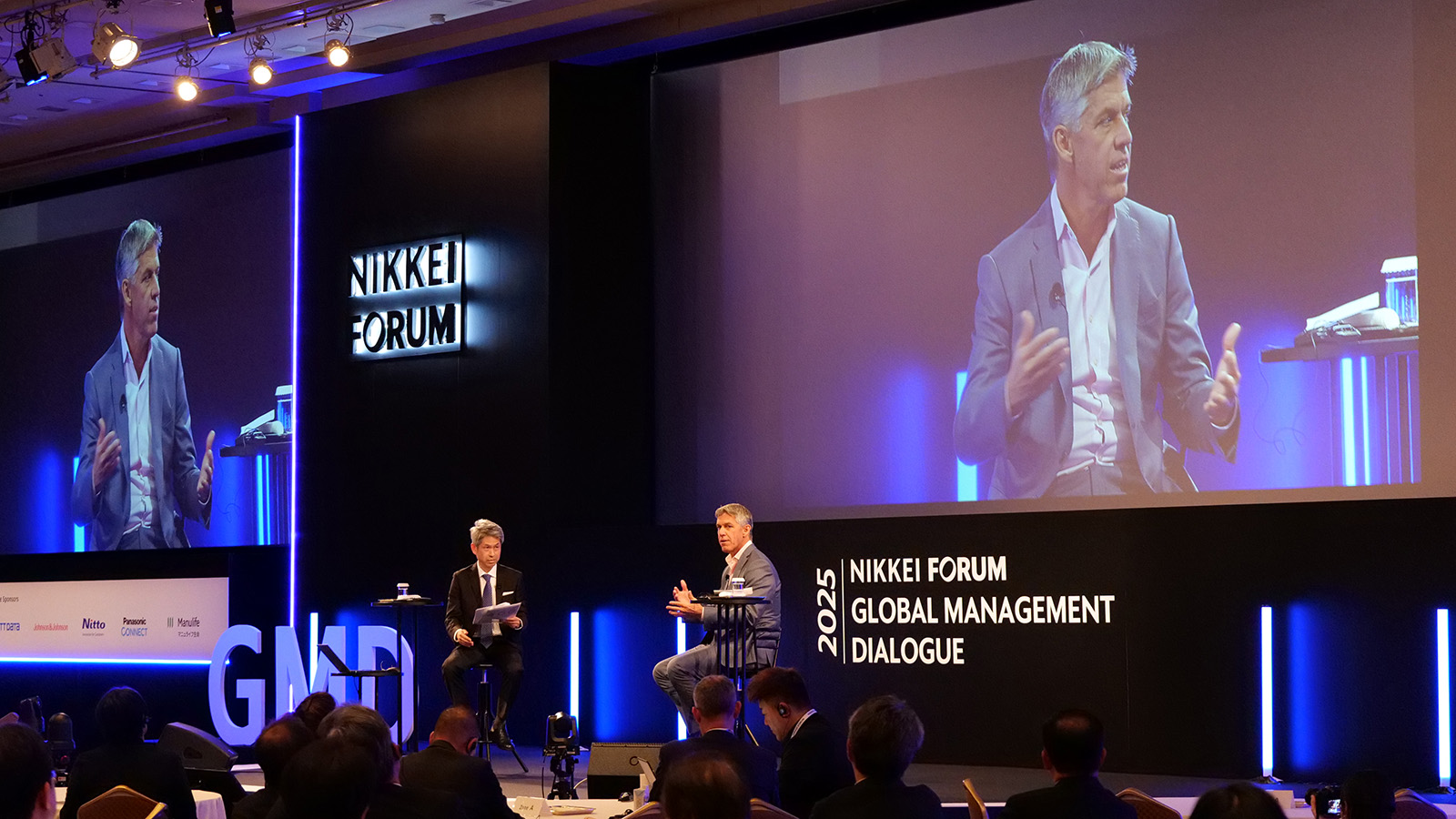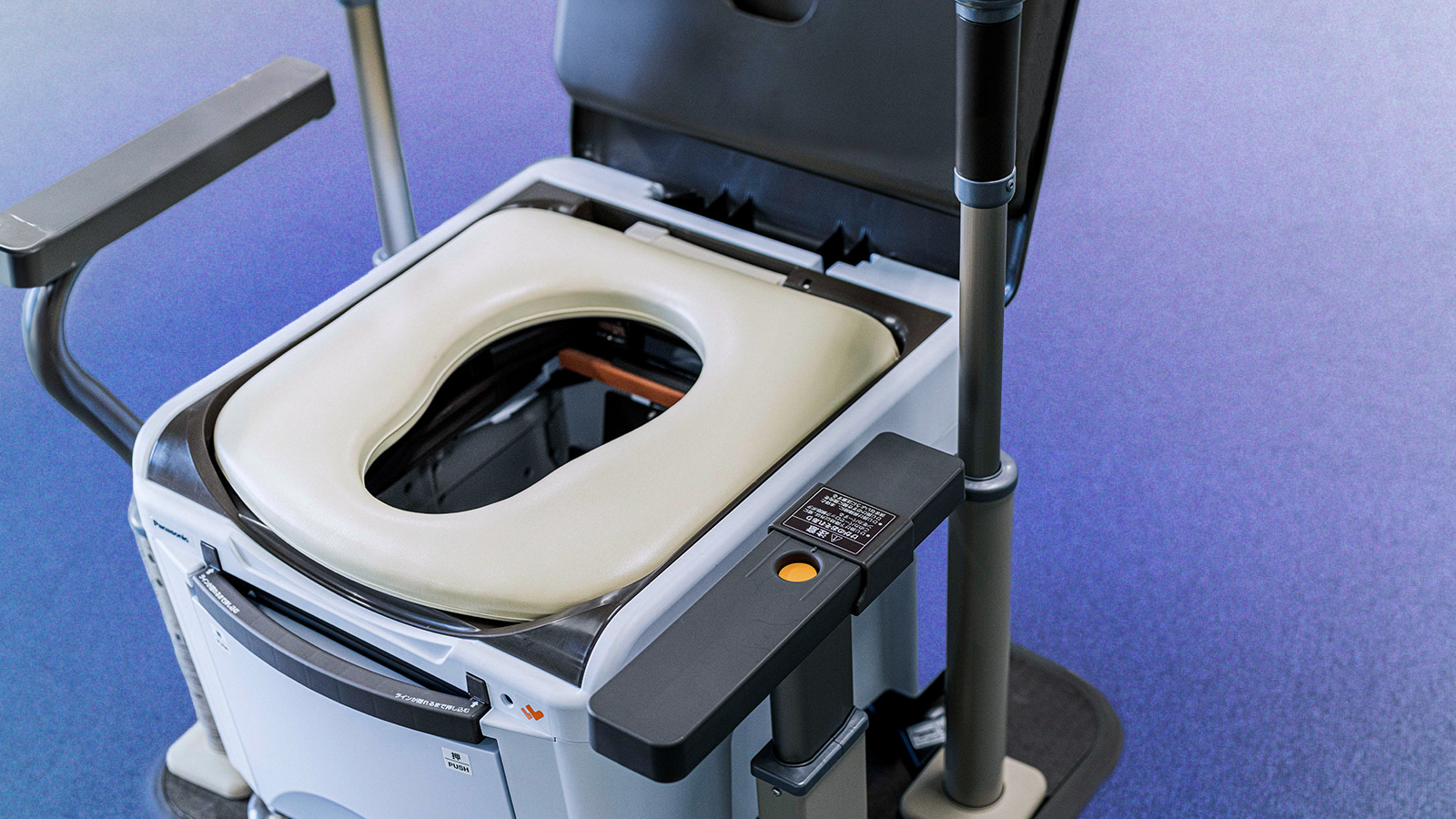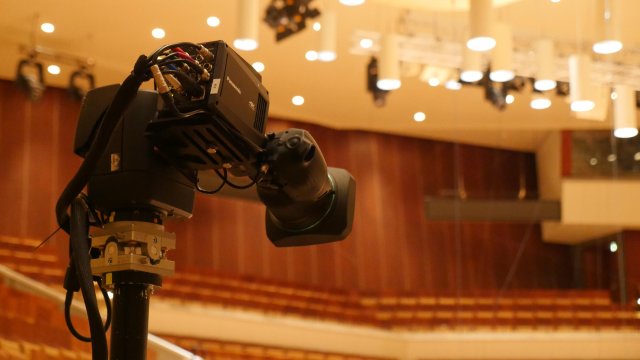
With 4K/HDR video equipment and no less than 87 high-tech video screens, Panasonic takes you right into the heart of cultural Berlin. At the Berlin Philharmonic, Panasonic's video solutions facilitate the incredible Digital Concert Hall streaming service while just a short walk away, Panasonic's video screens create immersive media experiences at the Brandenburg Gate Museum. Panasonic manages to bring both old and new Berlin close to you, even when you're far away.
(This article was revised on Sep 19, 2018.)
Digital Concert Hall: see strings vibrate from afar
A world famous violinist places his fingers in the right grip. He is getting ready for his solo, focusing on the music score in front of him. He gently closes his eyes right before he lets his fiddlestick hit the strings. The first tones echo through the concert hall, the hairs on your arms rise. You hold your breath while the whole orchestra joins the violinist to create a symphony. About half way through the piece, you decide to kick off your shoes and lean back, deep into your favorite chair.
There is nothing like experiencing classical concerts, especially from your own home. Or what about sitting front row at a live concert right in the middle of rush hour while still on your commute? With Digital Concert Hall, the Berlin Philharmonic Orchestra lets the audience in on more than 500 of their concerts, both live and recorded. With Panasonic's advanced 4K video technology, the image and experience have never felt closer.
"When Simon Rattle become chief conductor of the orchestra in 2002, he wanted to open the concert hall to the outside world," Robert Zimmermann explains, Chief Executive of the Berlin Phil Media GmbH. That ideal resulted into the creation of a unique and utterly modern Digital Concert Hall for the 130-year old orchestra in 2009. The subscription streaming service is accessible for everyone, anywhere on the planet. "It's very successful," Zimmermann says. "We have around 30,000 paid subscribers and 1 million followers."
Opening up the concert hall for the entire world to see was not something that could be done just like that. One of the biggest challenges that had to be overcome was the consensus that the recording of the concerts had to cause zero disturbance to both the musicians and the physical audience. That meant no additional lighting, no operators in the concert hall and only static, remote controlled cameras. "Working with Panasonic HD ready cameras we developed our own system, our own look and feel," says Zimmermann.
In 2017, the Berlin Philharmonic Orchestra consulted with Panasonic to take Digital Concert Hall a step further. "We wanted to start doing everything in 4K. Panasonic was open the idea and supported the Berlin Philharmonic in this." The transfer to 4K also required HDR which meant rebuilding the entire infrastructure and studios at the Berlin Philharmonic. "Last summer we tore every old cable out and installed new cables, glass fiber, new servers and new cameras, together with Panasonic," Zimmermann says. "It was a very ambitious and interesting project for everyone involved."
One of the eight remote controlled 4K/HDR (HLG) AK-UB300G Panasonic Box Cameras in action at the Berliner Philharmonie
By working closely together, the season opening of the Berlin Philharmonic in August 2017 could be transmitted with new Panasonic technology. Now everything is 4K HDR in all facets which adds greatly to the value of the experience. "You feel close and connected to the orchestra," says Christoph Franken: creative producer of Digital Concert Hall.
The AK-UB300 4K/HDR Box cameras have an incredible dynamic range. Just by looking at a screen you can see the subtle shine of the brass and how the shoulder movements of the conductor draw detailed shadows on his jacket. Razor sharp image, incredible brightness and soft lighting. Zimmermann concludes by stating that Digital Concert Hall is not something to keep people away from the concert hall. It's something to draw them in.
Immersive stories on 87 screens at Brandenburg Gate Museum
Drawing people in seems to be the exact same objective for Panasonic's technology at Brandenburg Gate Museum, which is situated in close proximity to the monument itself and just a kilometer from the Berlin Philharmonie. While going down the stairs at the museum and entering a room that consists of 87 screens all around, one might not know what to expect. It's a unique space: one of the largest Panasonic videowall screens in the world.
"This room has many modes. There is a museum mode, but the screens are also adaptable for business conferences, music streaming, art exhibitions, video games and even fashion shows," professor Lutz Engelke explains. Engelke is founder and CEO of TRIAD Berlin: a creative agency focusing on spatial communication, responsible for both the implementation and content creation of the Brandenburg Gate Museum. "The Panasonic screens make the room highly flexible. The result is digital storytelling at its best," says Engelke.
TRIAD produced a spectacular custom-made multimedia show for the Brandenburg Gate Museum which offers a unique journey through time. "If you dig deep into history, you can tell the entire story of Berlin, of Germany and even of Europe through the Brandenburg Gate," professor Engelke explains as the room darkens and the story appears on all 87 screens.
The screens draw viewers in and place them right in the middle of famous historic events. Extreme close-ups, archive imagery and special effects have never felt so real. Remarkably enough, the advanced technology of the Panasonic TH-55LFV6W screens evokes the association with vintage viewing boxes. The immersiveness and sense of captivation are quite similar.
The immersive effect of image all around on 87 Panasonic TH-55LFV6W videoscreens at Brandenburg Gate Museum
"We all look for innovation, for new ideas," Marc Burgdorff, head of tourism at TRIAD Berlin, says. He points at the wall of screens around him as he continues. "This is the future and we use it for communication. This room is a creative factory." The 87 screens are able to display the content of mobile devices such as smartphones or tablets - any kind of content can be shown. "It's a communication room," Burgdorff explains. "It could be a newsroom as well as a congress room. Live connections can be made all around the world."
Panasonic's media screens create a unique and versatile communication room at Brandenburg Gate Museum
Over the past 1.5 years, the room at Brandenburg Gate Museum has been used for anything from exclusive dinners to political debates and everything in between. With the rise of Virtual Reality, a whole new range of possible applications opens up for the Panasonic screens. Training situations, for instance, are nowadays mostly based on VR technology.
"Many tech companies come here to make use of the 270 degree view on these 87 screens. They don't have anything like this themselves," Robert Mönnich says, technical expert and one of the creators of the room. "This versatility of the media screens forms a unique selling point for Panasonic."
Panasonic's state of the art video technology connects people from Berlin to the world and brings the world right back to Berlin, both at the Berlin Philharmonic and at the Brandenburg Gate Museum where future and history go hand in hand.
# # #
- Disclaimer:
- We would like to note that Panasonic Newsroom is not a place to address personal Customer Service issues. Even though this is not the forum, Panasonic is always eager to resolve your concerns. Our local customer services contacts can be found at Global Support or you can see our list of Social Media Accounts to find the right channel for your queries and concerns.
Related Links
Related News
- [Press Release] Berliner Philharmoniker and Panasonic Sign Final Agreement to Collaborate on Technology Development (Dec 28, 2016)
- Magic is Where History and Technology Intersect - Bringing Stories Back to Life with Panasonic (Dec 19, 2016)
- [Press Release] Berliner Philharmoniker and Panasonic to collaborate on technology development in order to deliver an authentic live concert hall experience (Sep 01, 2016)
Photos
Studio 6 at the Berliner Philharmonie: where sound and image are mixed for Digital Concert Hall
The immersive effect of image all around on 87 Panasonic TH-55LFV6W videoscreens at Brandenburger Gate Museum
At Brandenburger Gate Museum, the Panasonic media screens are used to tell the story of Berlin through the history of the Brandenburger Gate


